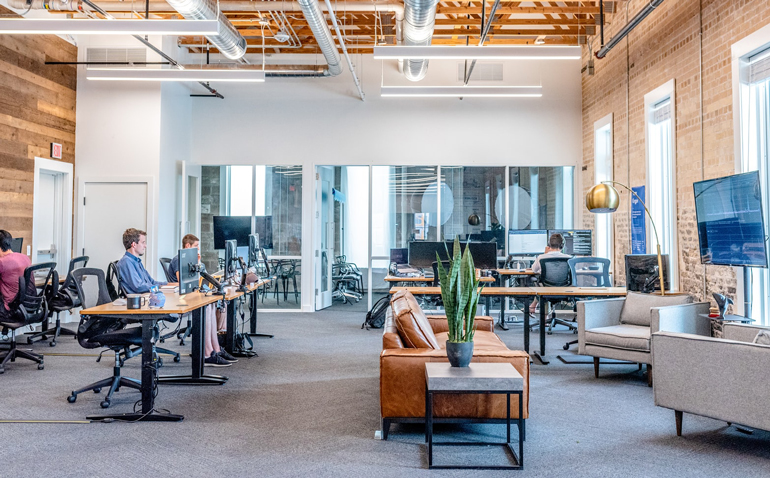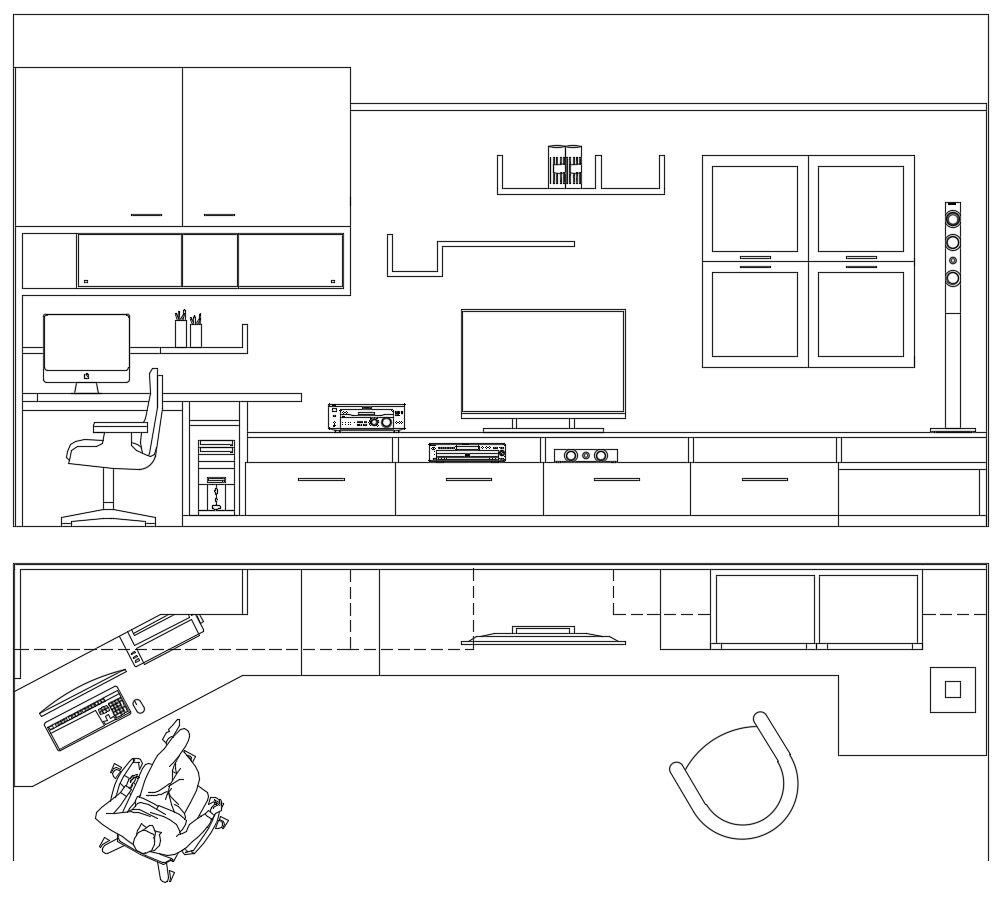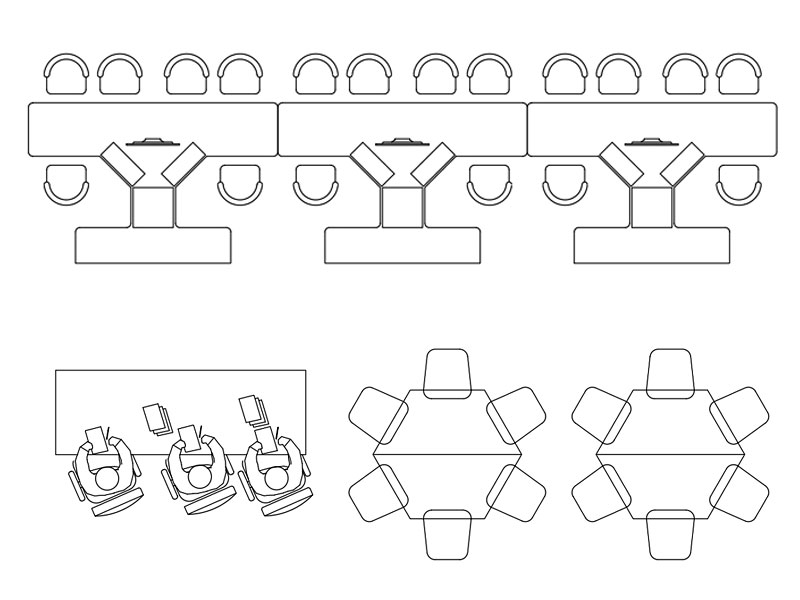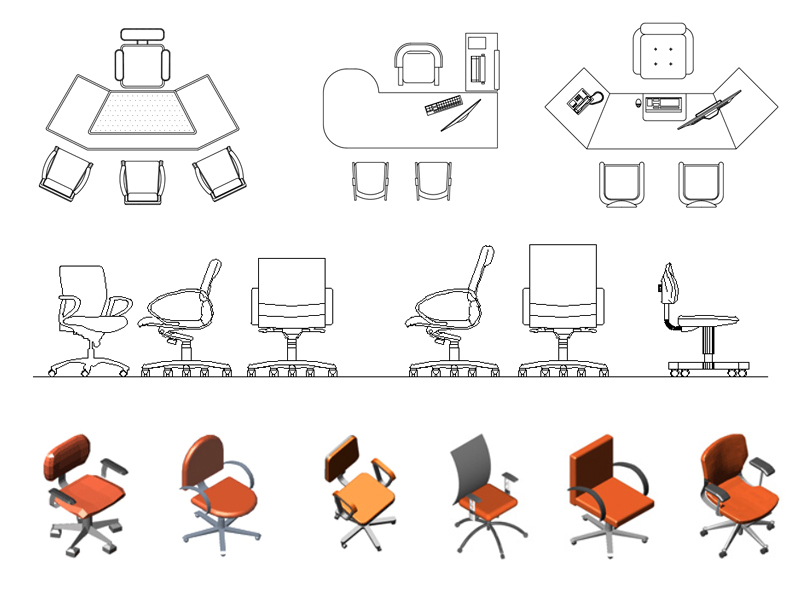The office after Covid 19
10 ways in which work and workplaces could change.

Millions of people around the world have returned to work and other countries are considering easing the blocks in stages.
Companies should plan how to adapt offices to comply with social distance rules.
COVID-19 has changed working life, changing how and where people do their jobs.
Governments and companies around the world try to minimize the transmission of the virus at work, the search for solutions is now high on the agendas of many organizations.
Here are 10 ways that work and workplaces could change.
1. Office workstation
In the United States they call it Six Feet Office. It is a way of transforming existing offices into places where the rule of distance greater than one meter can be observed, which governments can continue to impose.
Great architects around the world predict that the current pandemic will radically redesign office furniture.
It has been noted that over the years the desks have shrunk, from 1.8 to 1.6 meters, now to 1.4 meters and less, but it is thought that there will be a turnaround, as people will not want to sit down so close.
2. Simple solutions
How to keep desks clean? some very simple precautions could help. In addition to the necessary sanitization of environments and work surfaces, the use of hand sanitizer is recommended.
In several corporate offices, employees are provided with a paper placemat for their desk.
At the end of the day, the paper is thrown away, this solution could limit the spread of COVID-19 on the surfaces.
3. Is the open plan office outdated?
The fashion that has influenced the distribution of offices for decades has included working in open spaces with total fluidity. But COVID-19 could reverse this trend, will we have a strongly compartmentalized plan in the future?
Probably we will no longer return to work in the cell cubicles of a few decades ago, but the density in the offices will certainly change, many architects expect a departure from the classic open space layouts.
4. Signage
The offices of the future may have visual cues to keep your distance.
We think of road signs but for offices. From squash court style lines in the lobby to standing spaces in elevators, from circles around desks to aisles in corridors, the floors and walls of our offices are likely to be covered by visual instructions.
One possible approach is to encourage employees to walk clockwise, creating a one-way flow to minimize transmission, adopted by many hospitals during the current epidemic.

Source: https://www.cushmanwakefield.com/
5. Technology
Companies may also need to invest in a new suite of contactless technologies to reduce disease transmission.
Zaha Hadid Architects’ new headquarters for Bee’ah waste management company in Sharjah, United Arab Emirates, could be a taste of the future. It is full of what ZHA calls “contactless paths”, so employees rarely have to touch the building with their hands. Office doors open automatically using motion sensors and facial recognition, while elevators, and even a cafe, can be ordered from a smartphone.
The technology could also be used to remind employees of social distances. Devices have been installed in some U.S. offices to track employee movements via their cell phones, sending alerts when six-foot rules are violated.
6. Reconstructions
Given the seriousness of the situation, some companies may need to adapt their buildings, both for a partial renovation and for a more radical reconstruction.
“I think we will see wider corridors and doors, more partitions between departments and many more stairs,” says Kaicker.
So far “everything has been about breaking down the barriers between the teams, but I don’t think the spaces will become confused with each other”.
7. Clean air
Good ventilation is the key to preventing the spread of COVID-19, a big trend could simply be to open a window, if the windows can be opened, because many offices don’t allow it.
And where filtered air is the only option, it could be the boom-time for office air conditioning systems. Mass adoption of this technology by China is believed to have helped its employees return to their desks faster.
All buildings will absolutely improve air quality, said Joseph G. Allen, a professor of environmental health at Harvard University and author of the book “Healthy Buildings”.
“You bring in more outside air and dilute everything that’s inside air,” he said. “and of course, with advanced filtration, you can actually catch virus particles and other harmful particles.”
8. Collaboration
Will the recent boom in collaborating companies, where start-ups share buildings, and in some cases, desks, will there be a slowdown in the post-virus period?
Darren Comber, chief executive of architects Scott Brownrigg, thinks it could happen. “We have seen a huge boom in co-working spaces,” he told The Guardian, but after this, will companies really want to put their entire team in one place, where they mix closely with other companies?
9. Greetings
We have already glimpsed the future, as many organizations implemented changes to the greetings policy before office staff were sent home.
Handshakes are discouraged, and it seems likely that they will remain so for some time to come. But new greetings have emerged.
Earlier this year, billboards in Beijing promoted the taking of their hands. Even touching with the elbows has often been seen but doctors do not recommend it because the elbow can be used as a protection for sneezing. Touching your feet can be a fun alternative between friends and in sport between teammates. In professional life, eye contact and a nod would be fine, but expect more safety distance greetings to evolve soon.

10. More savings
How many new workers who have experienced work from home will want to return to full-time office life?
And finally, will offices continue to be convenient? when will the world legions of new home workers want to return to occupying their expensive jobs?
Will employers realize how much distance work could save them money?
Although Zoom’s dropouts and screaming kids have become familiar distractions, McKinseys believes that many of the most problematic aspects of working at home, from low productivity to poor communication, can be addressed with strong supervision, small team work and the right messaging tools for the job.
Many companies, both large and small, have provided staff with all the necessary tools so they can continue working through the pandemic. The move to the cloud has been accelerated to allow easy file sharing, the introduction of real-time communication applications to stay connected, the creation of virtual private networks for security.
In many cases the transition to remote work has been rapid, it may work so well that some may consider making it a more permanent way of working.
Work psychologist Adam Grant thinks that many employees are also discovering the pleasures of working from home.
“I made a list of all the things workers are happy about not having to do,” he said, “and that list of reasons includes the need to move.”
The questions are many, in any direction we go we must consider that, even before the pandemic, many companies had begun to experiment with flexible and agile work solutions. We have seen significant changes in the design of office spaces before the pandemic. Companies have started to move away from the traditional office layout and encourage the development of people-centered, collaborative and engaging spaces.
Many companies will take the opportunity to rethink their work organization to offer their employees more flexibility than ever, especially considering the proven benefits for productivity and commitment.



































































